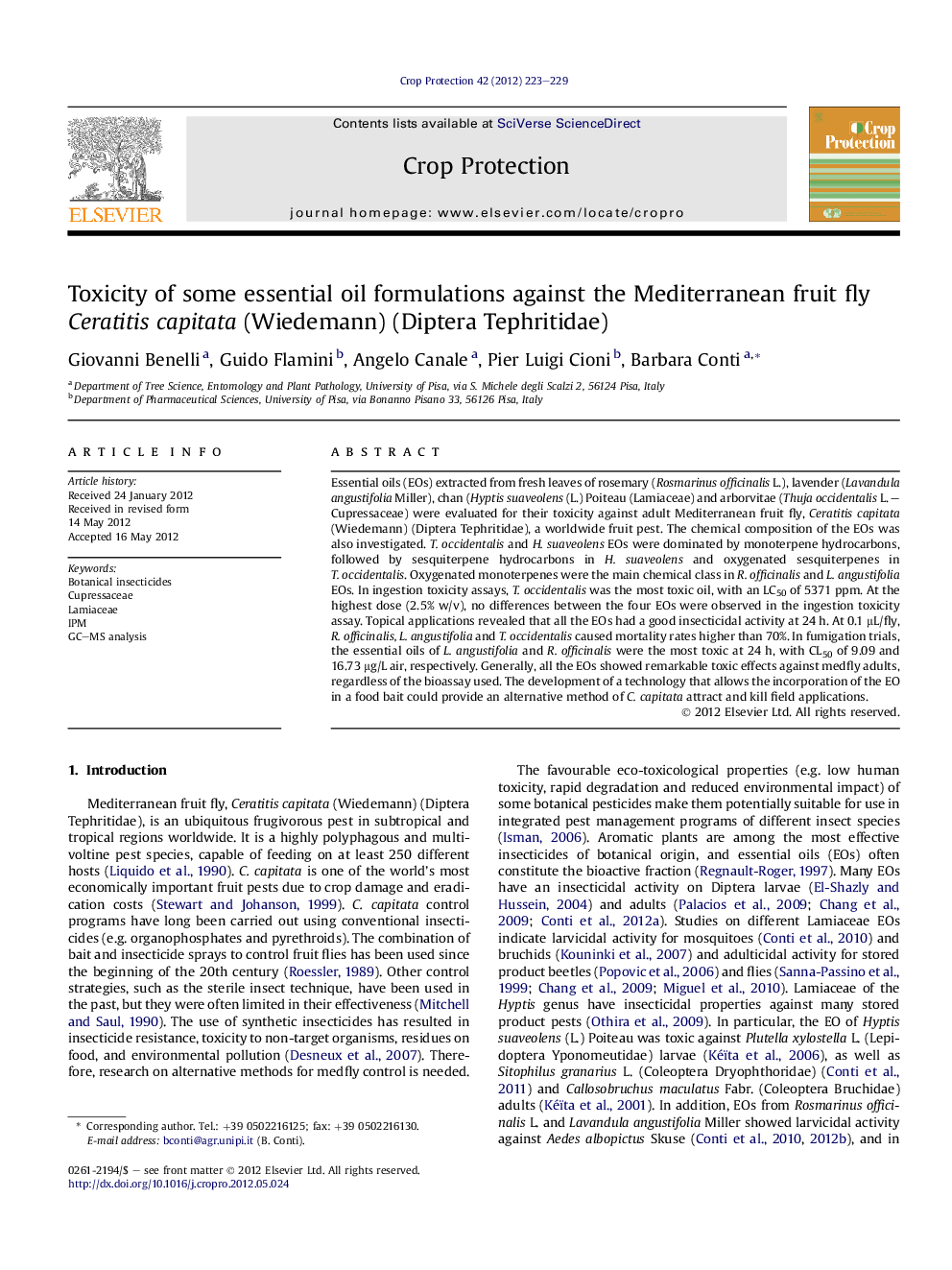| Article ID | Journal | Published Year | Pages | File Type |
|---|---|---|---|---|
| 4506167 | Crop Protection | 2012 | 7 Pages |
Essential oils (EOs) extracted from fresh leaves of rosemary (Rosmarinus officinalis L.), lavender (Lavandula angustifolia Miller), chan (Hyptis suaveolens (L.) Poiteau (Lamiaceae) and arborvitae (Thuja occidentalis L. – Cupressaceae) were evaluated for their toxicity against adult Mediterranean fruit fly, Ceratitis capitata (Wiedemann) (Diptera Tephritidae), a worldwide fruit pest. The chemical composition of the EOs was also investigated. T. occidentalis and H. suaveolens EOs were dominated by monoterpene hydrocarbons, followed by sesquiterpene hydrocarbons in H. suaveolens and oxygenated sesquiterpenes in T. occidentalis. Oxygenated monoterpenes were the main chemical class in R. officinalis and L. angustifolia EOs. In ingestion toxicity assays, T. occidentalis was the most toxic oil, with an LC50 of 5371 ppm. At the highest dose (2.5% w/v), no differences between the four EOs were observed in the ingestion toxicity assay. Topical applications revealed that all the EOs had a good insecticidal activity at 24 h. At 0.1 μL/fly, R. officinalis, L. angustifolia and T. occidentalis caused mortality rates higher than 70%. In fumigation trials, the essential oils of L. angustifolia and R. officinalis were the most toxic at 24 h, with CL50 of 9.09 and 16.73 μg/L air, respectively. Generally, all the EOs showed remarkable toxic effects against medfly adults, regardless of the bioassay used. The development of a technology that allows the incorporation of the EO in a food bait could provide an alternative method of C. capitata attract and kill field applications.
► The chemical composition of four essential oils from aromatic plants were provided. ► The essential oils toxicity was evaluated in ingestion, contact and fumigation trials. ► In contact and fumigation assays all essential oils showed good toxic activity. ► In ingestion trials Rosmarinus officinalis essential oil was the most effective toxin. ► Baits combined with essential oils could be an alternative way to control the medfly.
